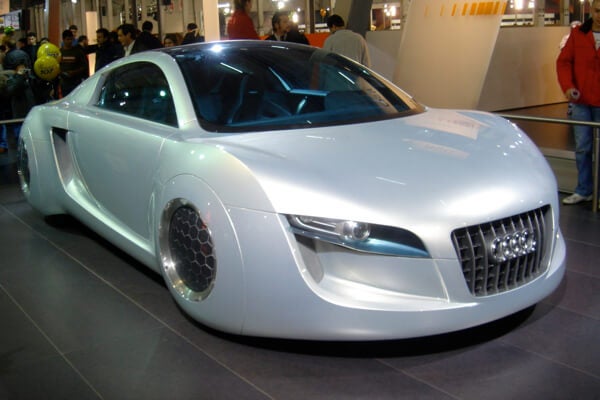Mercedes and Other Carmakers Are Building Increasingly Autonomous Autos
While Google and Stanford build robot cars from the top down, mainstream automakers are building autonomous autos from the base up. Before too long, the two will meet—at the least, relieving humans from an hour of stop-and-go traffic and maybe even taking over the entire commute.

Share
Google’s developing a self-driving car. Stanford’s robot car is close to outpacing a professional driver on the racetrack. Robot cars are undoubtedly on the rise. But you can’t buy one yet. Or can you? Mainstream automakers are adding self-driving capability piecemeal to already existing models. And some models will soon employ self-driving capabilities in certain situations.
Take the 2014 Mercedes-Benz S-Class, due out later this year. The S-Class is about as sentient as a contemporary car gets. "Figuratively speaking, the next S-Class won't just have eyes at the front; it will have 360-degree all-round vision,” says Professor Dr. Thomas Weber, head of Mercedes-Benz Cars Development.
The S-Class will sport a stereo camera on the windshield to peer ahead in 3D, short- and long-range radar in front and rear, and short-range radar on the sides. Twelve ultrasonic sensors will detect objects very close to the car—during self-parking, for example. And added to external sensors, the S-Class will have internal sensors to monitor drivers.
This sensor suite will enable the S-Class to recognize pedestrians, lane markings, even speed limit signs.
But the S-Class won’t simply recognize these things—it will do something about them. Authorized action may be as simple as issuing a warning light or sound, gently guiding the wheel to help drivers stay within their lane, or maintaining a safe following distance when cruise control is on.
But in certain hazardous situations, the S-Class is programmed to take over braking when its sensors and computer—dubbed “intelligent drive”—can augment or even outperform the driver’s senses and brain.
For example, entering an intersection the car’s radar will scan front, rear, and sides. If the car detects an approaching object, it can calculate precisely how much braking is needed to avoid a collision. (The computer even takes into account cars approaching from the back—doing its best to avoid a pile-up.) If the driver hesitates, is too timid, or simply doesn’t notice, the computer will make up the difference.
Pretty impressive, no? Mercedes is moving toward fully autonomous cars. But Dr. Weber doesn’t believe we’ll ever give over the reins entirely.
“By no means do we wish to take over control from the driver…Instead, the aim is to relieve motorists when driving is more of a burden than a pleasure—on the monotonous daily commute, for example, or in stop-and-go traffic. From a purely technical standpoint, that's already possible now to a certain extent.”
Be Part of the Future
Sign up to receive top stories about groundbreaking technologies and visionary thinkers from SingularityHub.


If you can’t wait for a fully self-driving car and you’ve got the dough, you can buy a Mercedes. Even better, autonomous safety features will soon be available in lots of cars. According to Fortune, Volvo, BMW, Ford, Citroen, Honda, and GM are manufacturing or developing advanced models boasting radar-based collision warning systems.
And the next round of innovation is already heating up.
Whereas, the most recent technology is focused on external sensors, next generation models will wire interiors too. Ford, Mercedes, and Lexus are said to be developing interior biometrics to directly monitor drivers and inform algorithmic decision-making. These sensors may include steering wheels that detect “galvanic skin response” and seat belts that record breathing.
And most resembling the autonomous future, Audi showed off its Pilot Parking and Pilot Driving technology at CES 2013. The technology takes complete control of the car at low speeds to relieve drivers of certain simple tasks. See here for a demonstration of the technology finding and pulling into a spot in a parking garage:
While Google and Stanford build robot cars from the top down, mainstream automakers are building autonomous autos from the base up. Before too long, the two will meet—at the least, relieving humans from an hour of stop-and-go traffic and eventually taking over the entire commute.
Image Credit: Georgios Pazios, Daimler
Jason is editorial director at SingularityHub. He researched and wrote about finance and economics before moving on to science and technology. He's curious about pretty much everything, but especially loves learning about and sharing big ideas and advances in artificial intelligence, computing, robotics, biotech, neuroscience, and space.
Related Articles

These Robots Are the Size of Single Cells and Cost Just a Penny Apiece

Hugging Face Says AI Models With Reasoning Use 30x More Energy on Average

Study: AI Chatbots Choose Friends Just Like Humans Do
What we’re reading


